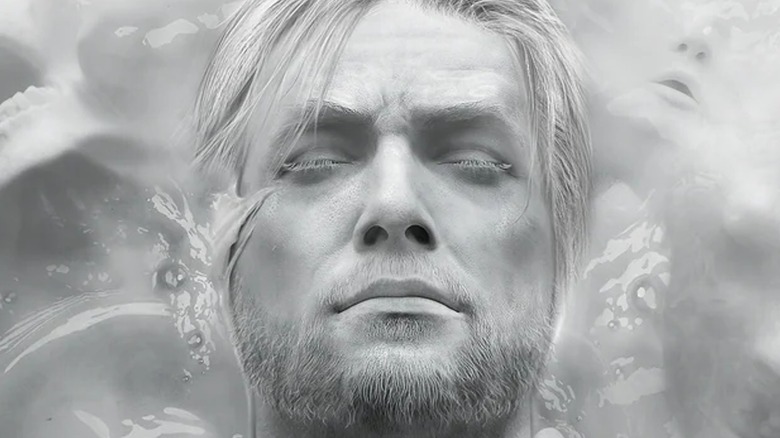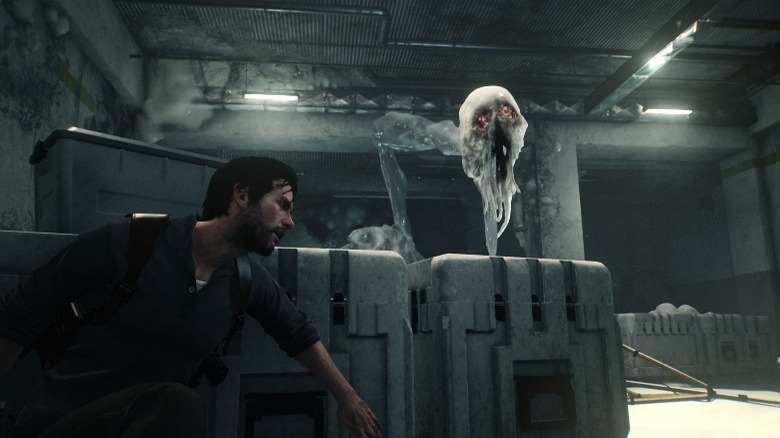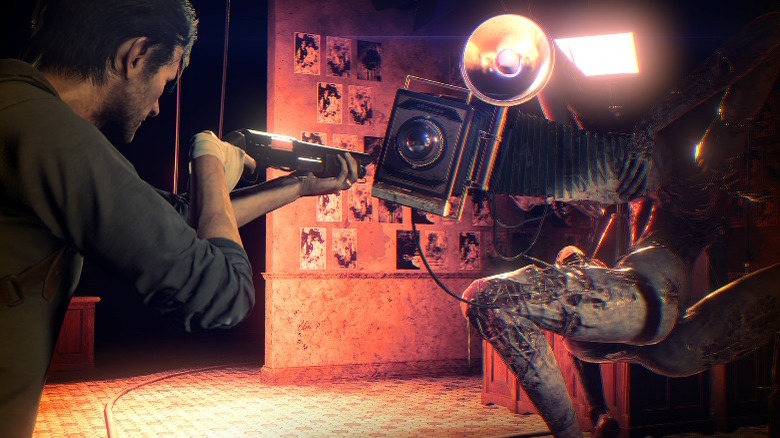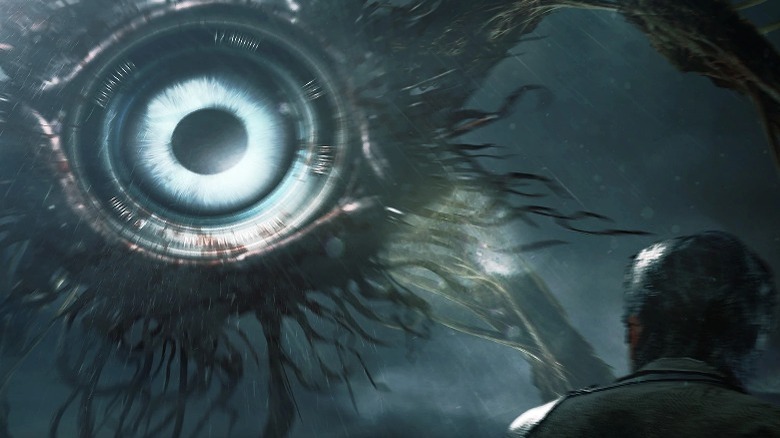The Unfortunate Reasons The Evil Within 2 Was An Immediate Flop
"The Evil Within 2" is a masterfully executed horror game that came out back in 2017. The visuals and gameplay of Tango Gameworks' haunting story combine to strike a tone that is both bizarrely fascinating and deeply unsettling. Reviews of the game have been overwhelmingly positive in the time since its release. It received a 9/10 from Polygon and 8/10 from both IGN and PCGamesN – with most reviews giving particular praise to the way the game balances the player's freedom to move about and explore with its ability to maintain a tense atmosphere. It isn't just individual reviews where it's stood out, though. "The Evil Within 2" has also done fairly well in aggregate scoring systems. It has Very Positive reviews on Steam and a score of 80 on Metacritic. With so much praise, most people would naturally think that the sequel to one of the creepiest games of the last decade sold quite well, right? Well – not really, no.
It might surprise many fans to learn that "The Evil Within 2" sold quite poorly. It was actually considered something of a flop at launch. In fact, its initial sales were only a quarter of those achieved by the first "The Evil Within" game. So why did a game that achieved so much critical success sell so few copies? It's hard to say for certain, but there are a few factors that might have contributed to the title's lackluster numbers.
The first Evil Within had a lukewarm reception
One reason that "The Evil Within 2" might not have done so well is that critics' opinions of the first game were considerably more divisive than they were regarding the sequel. There are some who have praised it as one of the best horror games of all time, but there have been just as many who weren't all that thrilled. "The Evil Within" received a far less impressive score of 68 on Metacritic, with several critics suggesting that while the design and story were good, much of the gameplay lacked polish.
Philip Kollar of Polygon wrote about this in his review. "While "The Evil Within" is ostensibly a horror game, it is first and foremost a third-person shooter. And at its best, that shooting feels great," he said. "But 'The Evil Within' often provides almost no breathing room between intense, exhausting encounters. No sooner would I clear a room of a half dozen enemies than another half dozen would appear to take their place, with a frustrated quip from the protagonist."
It's possible that many fans who had similar feelings about the lackluster pacing and mechanics in the first game simply weren't willing to give "The Evil Within 2" a shot.
Bethesda had a bad habit of withholding review copies
Another factor that may have contributed to the less-than-successful launch of "The Evil Within 2" is the way the game's publisher, Bethesda Softworks, has an unfortunate habit of withholding review copies of its titles until just hours before they are launched to the public, according to Forbes. Game reviews take a long time to make. First reviewers have to play the game, making sure they've fully experienced enough of the mechanics, performance and story to get a solid impression of it before they actually compose and write (or film) their review. This then has to be edited and finally published – preferably by the game's release date.
Receiving review codes just days before launch, as was the case reported by several "The Evil Within 2" reviewers, does not give them adequate time to experience the game and create their reviews by the embargo date. This makes it so there are no third party reviews when the games launch. Not only does this mean that fans are "buying blind," but some may also view this as signaling that the publisher feels it has something to hide. Why would it withhold the review codes if it were confident that the game would be well received? This might actually discourage some fans from immediately buying the game.
Fall 2017 was a big season for games
There's one more reason that "The Evil Within 2" might not have sold as well as it could have. There were, quite simply, a lot of really good video games that came out in Fall 2017. "Hellblade: Senua's Sacrifice," "Sonic Mania," "Uncharted: The Lost Legacy," "Hello Neighbor," "Life is Strange: Before the Storm," "Destiny 2," "Cuphead," "Assassin's Creed Origins," "Super Mario Odyssey," Wolfenstein 2: The New Colossus," and "Call of Duty: WW2" all came out during the same season – just to name a few. 2017 games
Obviously, not all of these fall into the horror genre and some might not cross over with Tango Gameworks' player base, but even so, it can be difficult for a new title to stand out when the gaming market is flooded with major releases. Some fans might have been occupied with other new titles while others might not have even realized that "The Evil Within 2" was released in the chaos of all the new games that publications had to discuss.
It's impossible to say for certain why "The Evil Within 2" was a flop in spite of being such a good game, but any or all of these factors may have contributed.




